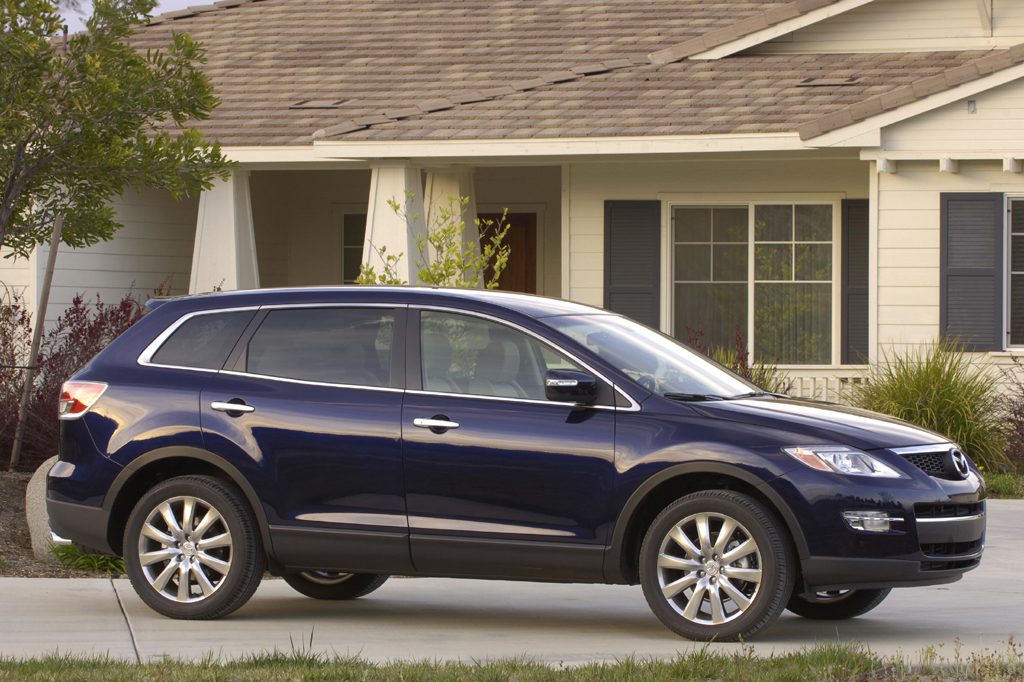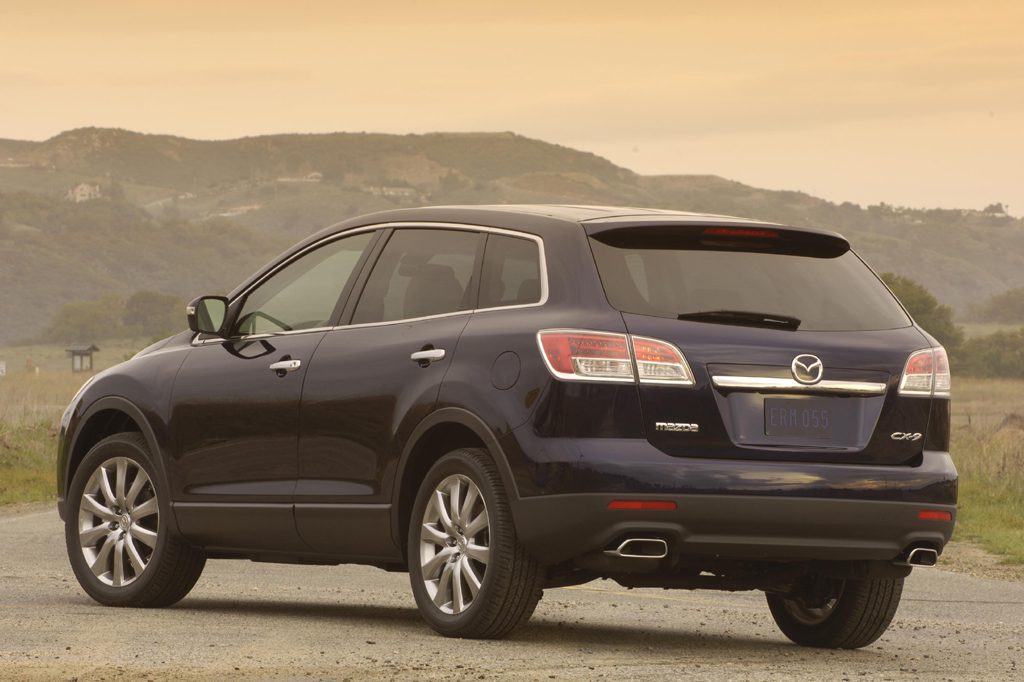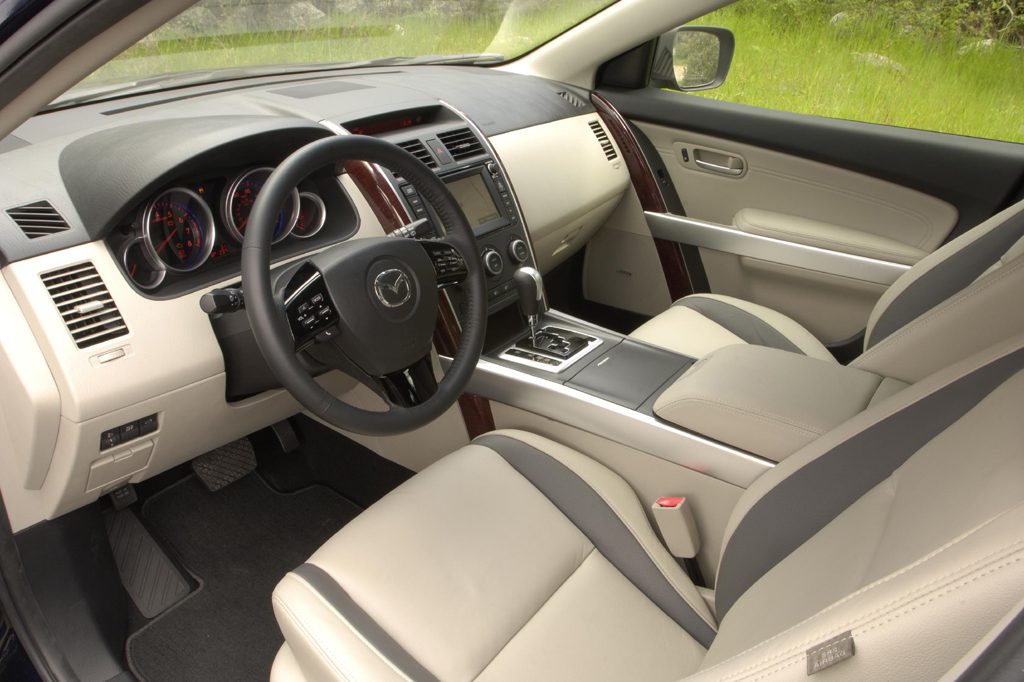| Midsize SUV; Built in Japan |
|
|
| Good condition price range: $7,400 – $31,800* |

2008 Mazda CX-9

2008 Mazda CX-9

2008 Mazda CX-9
| Pros: |
|
| Cons: |
|
Mazda’s CX-9 is a stylish, refined entry that adeptly balances solid driving dynamics with generous passenger and cargo space. On the downside, the ride is a bit stiff and the available navigation system isn’t the easiest to use. Lack of highway passing punch is another demerit. Still, this vehicle does many things well and is a good choice in an increasingly crowded field of seven-seat midsize SUVs.
Overview
Mazda’s first seven-passenger sport-utility vehicle bowed for 2007. Like Mazda’s five-seat CX-7 SUV, the CX-9 was a car-type midsize “crossover” wagon. But this one was larger and borrowed its engine and some underskin from the also-new Edge produced by Ford, Mazda’s corporate parent. Offered in Sport, Touring, and top-line Grand Touring models, the CX-7 held a 263-horsepower V6 and six-speed automatic transmission. All models were available with front-wheel drive or all-wheel drive, which lacked low-range gearing.
Antilock braking and traction/antiskid control with rollover sensors were standard. So were front side airbags and curtain side airbags that covered all three seating rows, and included rollover deployment. Seating included folding benches; the second row split 60/40, the third row 50/50. The second-row seat reclined and slid fore and aft to favor passenger or cargo space. Tri-zone climate control and a tilt and telescopic steering wheel were standard. Touring models added leather upholstery and heated power front seats. Grand Tourings included xenon headlamps and 20-inch wheels, versus the usual 18s. A sunroof and DVD entertainment were optional, but could not be ordered together. A power liftgate and a navigation system with rearview camera were available on Touring and Grand Touring models. Competitors included the GMC Acadia, Honda Pilot, Saturn Outlook, and Toyota Highlander.
Yearly Updates
| 2008 CX-9 A larger (3.7-liter) V6 engine for 2008 gave the CX-9 an extra 10 horsepower and an even greater increase in torque output. A new Blind Spot Monitoring system was optional for Grand Touring models. |
| 2009 CX-9 The 2009 Mazda CX-9 was largely unchanged. |
| 2010 CX-9 The 2010 Mazda CX-9 received slightly freshened exterior and interior styling. |
| 2011 CX-9 The 2011 Mazda CX-9 was largely unchanged. |
| 2012 CX-9 There were no changes of note to the 2012 Madza CX-9. |
| 2013 CX-9 For 2013, CX-9 received its most significant freshening yet. Reworked exterior styling helped bring this crossover in-line with the brand’s other vehicles, including the Mazda CX-5 crossover and redesigned 2014 Mazda 6 midsize sedan. The interior saw a number of changes, too, including a revised dashboard and infotainment system. CX-9’s chassis and drivetrain carried on unchanged, however. |
| 2014 CX-9 Rear cross-traffic alert was a newly available option for the 2014 CX-9. |
